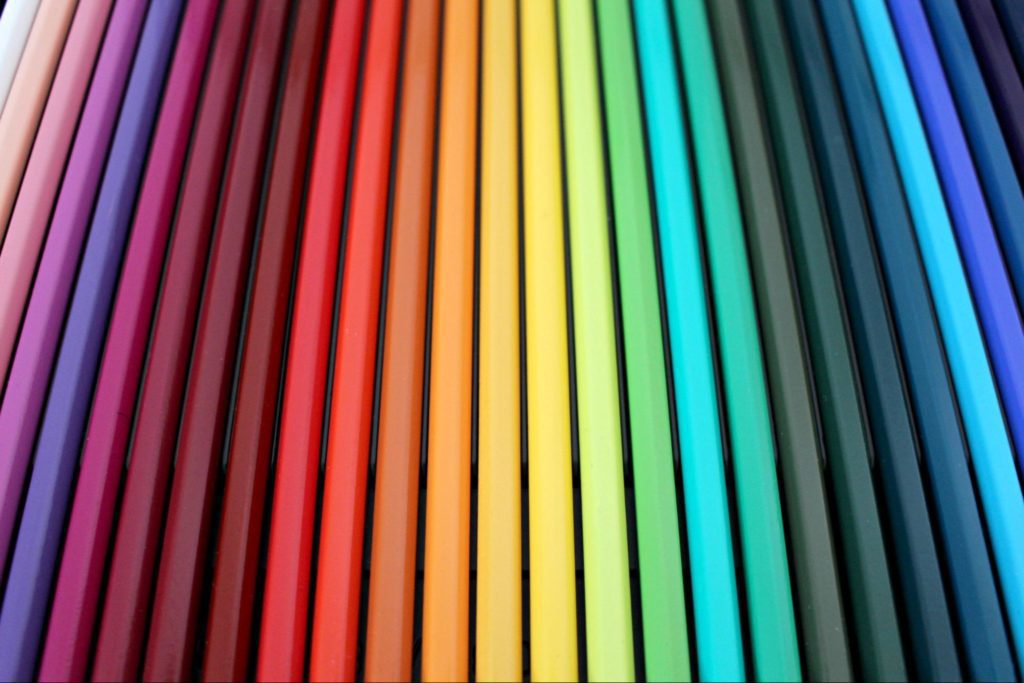The cover of a book is often the first thing that catches a potential reader’s eye. And while there are many factors that go into designing an effective cover, color is one of the most important. Different colors can evoke different emotions in people, so it’s important to choose the right colors for your book cover design. But what are the right colors? And how do you know which ones will work best for your book?
Let’s take a look at the psychology of color and how it can influence a potential reader’s decision to pick up your book.
How to choose the right color for your book cover
There is no one-size-fits-all answer to choosing a color for your book cover. But there are some key factors that can help you make the best choice for your design.
First and foremost, the most important thing to keep in mind is that different colors can evoke different emotions in people. For example, certain hues of blue are often associated with feelings of trust and security, while shades of red can be associated with excitement and energy. So if you’re looking to create a certain mood or feeling with your book cover, you’ll want to choose colors that align with those emotions.
Another thing to consider is your target audience. While all books may be enjoyed by a wide range of people, each book will likely have a specific target audience. You’ll want to consider that when choosing colors. For example, a children’s book might want to try brighter, more cheerful colors than a book about death, loss, and hardship.
Once you’ve considered these things, it’s time to start thinking about what specific colors might work best for your book cover.
Color psychology for book covers
Here are a few basic principles of standard colors to help you choose the right one for your book’s cover art.
- Red: Red is often associated with danger, violence, and passion. It’s no surprise, then, that this color is often used on book covers for thrillers and suspense novels. Red can also convey a sense of urgency, which makes it ideal for time-sensitive non-fiction books. Overall, red is a powerful color that can easily make your book stand out from the rest.
- Blue: Blue is often seen as calming, serene, and trustworthy. It’s a popular choice for book covers in the self-help and self-improvement genres. Blue can also suggest intellectualism and wisdom, making it a good choice for history books and biographies.
- Yellow: Yellow is often associated with happiness, optimism, and sunshine. Not surprisingly, then, this color is often used on book covers for feel-good fiction and non-fiction titles. Children’s books also frequently include yellow on their covers as this color appeals to young readers.
- Green: Green is most commonly associated with nature and peace. For this reason, green is often used on book covers for environmental non-fiction and nature writing. However, green can also suggest wealth and prosperity, making it a good choice for business books and financial guides.
- Pink: The color pink is often used on book covers as a way to evoke emotions such as romance, love, and happiness. The light, airy hue of pink can instantly set the tone for a book. It can also help to attract readers who are looking for a particular type of story. In addition, pink is often used on book covers that feature female protagonists, as it is seen as a more traditionally “feminine” color.
- Black: The color black is often used on book covers to evoke a sense of mystery, suspense, or danger. Black can be seen as a symbol of the unknown or shadows. It inspires a sense of suspicion, hinting at the dark secrets that may be hidden within the pages. In some cases, black may also be used to convey a sense of loss or mourning. For example, a black cover might work well for a book about grief or a book with a tragic ending. Ultimately, the use of black on a book cover can create a variety of different emotions, from excitement and anticipation to dread and fear.
- Purple: Purple is a luxurious color that denotes royalty and prestige. It’s often used on covers for business books or books about success. If your book contains high-level advice or strategies, purple may help convey the gravity of its contents. Whether it’s a business book or a self-help book, adding a touch of purple can make it look more high-end and valuable.
- Brown: Brown is often associated with the color of earth and, as such, can push a feeling of grounding or stability. It is also a very neutral color, which can make it appear safe or reliable. When used on a book cover, brown can convey a sense of dependability or wisdom. For example, a non-fiction book about history might use a brown cover to convey the idea that it is a trustworthy source of information. Alternatively, a book about nature might use a brown cover to evoke the feeling of being surrounded by the beauty and serenity of the natural world.
- Orange: The most common emotion that orange evokes is excitement. This is because orange is a very stimulating color. It is also associated with happiness and fun. Therefore, when you see a book cover that is orange, it is likely that the book will be an enjoyable read. Other emotions that orange can evoke include warmth, friendliness, and relaxation. This is because orange is also a very warm color. So if you see a book cover that is orange, it is likely that the book will be a feel-good read.
The next time you’re designing a book cover, make sure to keep the psychology of color in mind. The colors you choose can influence a potential reader’s decision to pick up your book or not. By understanding the meaning behind these different colors, you can create a cover that more effectively communicates your book’s message—and boosts its chances of success in the process!
Are you ready to become a published author? Let’s chat!
If you’re interested in learning more about our partnership publishing opportunities, reach out to our team today! We would be happy to chat with you about your project and see if we might be a good fit.




